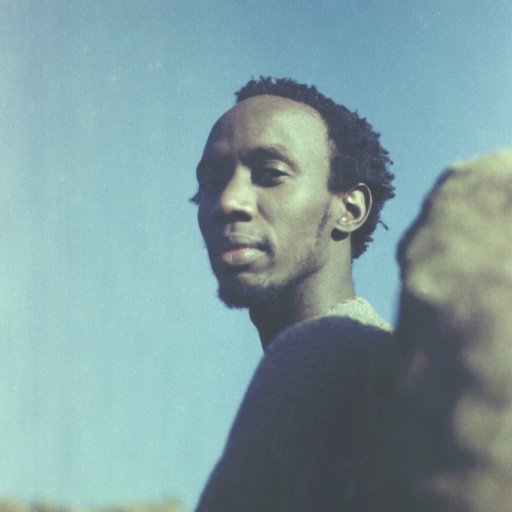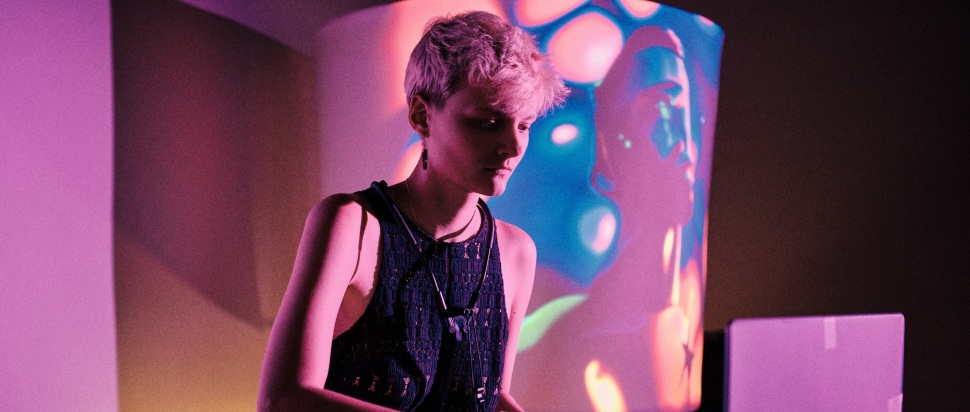Sonica Surge: Sonia Killmann and KMRU on their work
As Cryptic's 30th anniversary fast approaches, the Glasgow audiovisual art institution brings Sonica Surge to Tramway for a weekend of experimentation at the end of September. We speak to a couple of the artists involved
The possibilities posed by the fusion of music and images have been well served in Glasgow over the last 30 years thanks to the presence of Cryptic, a home for weirdo audiovisual art pushing frontiers and supporting artists working across sonic and visual mediums to help make their ideas reality.
To celebrate the three-decade milestone, Cryptic is delving into a year of celebrations that begin with the Sonica Surge festival held at the Tramway in Glasgow’s Southside. The lineup is a unique blast of audiovisual auteurs from both home and abroad who are interrogating the phenomena of modern life through the indelible combination of sounds and pictures. Its depth and idiosyncrasy is indicative of past Sonica festivals Cryptic has curated. Headlining the two days, and encapsulating its spirit, is German digital artist and musician Robert Henke, one of the creators of the audio software Ableton Live, who will channel archaic technologies – namely, five 1980s Commodore computers – into playful visuals backed by a soundtrack influenced by his explorations of club culture and contemporary music, work he has been building on since the fall of the Berlin wall.
Sonia Killmannn is excited to see what kind of “analogue craziness” Henke is going to present. Killmannn, a Belgium-born musician based in Glasgow, has made the visual aspect a key component of her practice for several years. She is also signed as a Cryptic Artist – the production house has helped Killmann establish her name within the field.
“Being involved with Cryptic has been life changing for me,” she says. “I would never have been able to travel, developing my work at residencies. They push me constantly and give feedback when I am working on a project. They allow me the freedom to decide whether to take a project on or not, and give me guidance that has been invaluable, especially at the start of my career.”
At Sonica Surge, Killmann will present Digital Skies, which explores the impact of light pollution on our environments and how it has affected our perception of natural and artificial light sources. She explains: “There’s something so normal about being able to see the stars, and yet we have chosen to isolate ourselves in cities filled with billboards and street lamps that mask them and cause us sleep deprivation. And yet, what would we do without artificial light? We need it for safety, we are guided by it. I was interested in that dichotomy.”
The performance will see Killmann play saxophone, her primary instrument, built into an evolving soundscape, while the visuals – projected onto a lamp made of recycled pool materials – are partly assembled from adapting excerpts from The Little Prince processed through Stable Diffusion, a text-to-image AI system.

KMRU. Credit: Thukia
Killmann wants to subvert audience expectations of audiovisual presentation. “The reason I started adding visuals to my work in the first place was to play with perception. Tricking audiences into seeing something in the visuals that only comes from within them. Many think my visuals are audio reactive, when in fact they’re not always, and yet they see the image moving with the sound anyway. I think that’s so cool.”
Joseph Kamaru, a Nairobi-born, Berlin-based musician, who has received critical acclaim for his field recording compositions and has become a serious player in the ambient music world, will also appear at Sonica Surge. He is not primarily an audiovisual artist, but it’s an example of Cryptic’s commitment to hosting leftfield collaborations. For the festival, Kamaru, who performs as KMRU, will bring his piece with German visual artist Markus Heckmann, As Nature. Calling in from a residency in Lisbon, he is quick to ensure the two are given equal billing.
Initiated during lockdown, Kamaru used specialised equipment to turn his field recording practice on electromagnetic signals being broadcast throughout his home. “I wondered if these sounds, from electronics and devices, affect how we feel, and how our bodies react to the spaces we’re present in.”
He says it’s part of a wider assessment of his work as a field recordist and how it affects his self-expression. Essentially, this sound collage is Kamaru’s attempt to translate the unheard sounds we experience constantly, even in seeming silence. The same impetus has led to a more synthetic new record too, called Dissolution Grip, that moves away from his found sound-indebted work.
“I'm excited about the piece,” says Kamaru. “I have performed it a lot over the last year and haven’t released the project, and it's always changing every time in different spaces, different contexts. And you can feel the noise, it’s very noisy and static, and the disintegrating lines of Marcus’s visuals complement it so much.
“Whenever I’ve done an AV piece, I feel it should always be in collaboration. Both entities should work together; the music shouldn’t have a visual aesthetic that’s just a backdrop. A balance is important so that they both amplify the work itself and neither element takes away from the other.”
Sonica Surge takes place at Tramway, Glasgow, 29 & 30 Sep; Sonia Killmann performs on 29 Sep; KMRU & Markus Heckmann performs on 30 Sep
